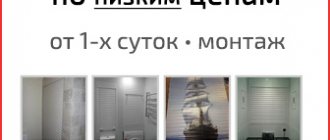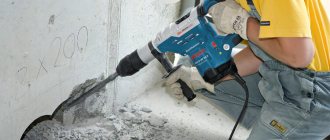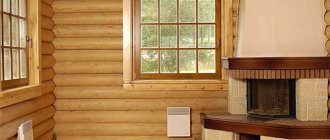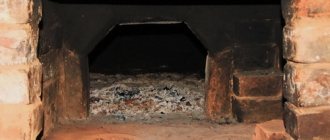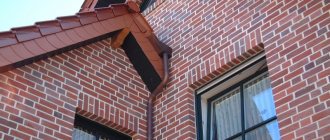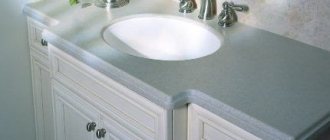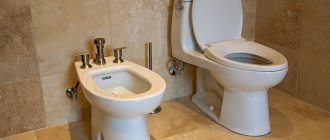Every self-respecting man, in accordance with his duties as the “master of the house,” has a drill in order to hang a shelf, picture or cabinet at the request of his significant other. But the walls in houses and apartments differ in their structure, density and purpose. So, drilling a hole in a load-bearing wall is much more difficult than in an interior partition. Accordingly, drill bits for drills differ both in their purpose and in the material from which they are made. We will talk about how to choose the right drill bits for concrete, brick or stone in this short article.
Manual drilling method
If you don't have an electric drill or hammer drill at hand, you can make a hole in a brick wall by hand. For this you need a bolt and a hammer. The bolt is a long steel tube. You can buy it at the store or make it yourself.
Hammer as a handy tool for drilling walls
To make a bolt you will need a steel pipe. A piece of 30 cm should be cut from it. It is desirable that the diameter of the pipe be at least 25 mm. At one end of the bolt, teeth are made using a file.
The technology for creating holes using a bolt is quite simple. First you need to designate the drilling location. The bolt side with the teeth is placed at a right angle to the mark. It must be hit with a hammer, getting rid of brick dust every three hits and turning the bolt.
It should be borne in mind that drilling bricks will require a lot of effort. But at the same time, the blows must be quick and clear, otherwise there is a possibility of damaging the brickwork.
Differences between hollow brick and solid brick
Here are two types of bricks - solid and hollow.
Solid and hollow brick
Let's start with solid brick . It, as you probably already guessed, is denser and can withstand greater loads.
As for hollow brick , it can withstand much less pressure, and therefore large structures are not built entirely from it.
Types and purpose of bricks
Important! The main advantage of a “brick with holes” is that it conserves heat better. And all thanks to these very “holes” filled with air, which, in turn, stores heat well and cools down for a long time.
Modern windows are constructed according to a similar principle: double-glazed windows consist of several panes of glass with layers of air between them (and often this is not even air, but other gases that protect us even more effectively from the cold).
Hollow brick is designed on the same principle as double-glazed windows
The key factor in the case of hollow bricks is the low thermal conductivity provided by the internal cavities. But for everything to work as it should, the cavities must be sealed, that is, they should be thoroughly sealed with a solution so that cold air from the outside does not penetrate there. By the way, the lion's share of heat loss in an apartment is a consequence of blowing in from windows, cracks, etc.
It is important that these cavities are sealed
In addition, hollow brick weighs less (read: saving on material), but here it is important to correctly take into account the loads. It is simply impossible to build tall structures from it.
Ceramic brick - solid and hollow
Hollow Brick Properties Table
Prices for hollow bricks
hollow brick
Electromechanical drilling technology
Making holes in brick using power tools is much easier than making holes by hand. An impact drill or hammer drill is suitable for these purposes.
Hammer for drilling a brick wall
The drill must meet special conditions so that it can easily drill through brick:
- It is necessary to use a drill with an impact function only. The impact drill has protection against overheating of the drill, so it will last much longer than a regular one. It also puts more pressure on the material in which the hole is made.
- A drill with a power of 600 W or more is suitable for drilling bricks.
- To make precise holes of the required depth, you should give preference to a drill with a continuously variable speed control function.
A hammer drill costs more than an impact drill, but drilling is much easier with it. A good option would be to rent equipment if you need to make holes larger than 18 cm. In this case, you will need a hammer drill with diamond bits.
It is worth paying special attention to the choice of drills. For small holes you will need drills with a diameter of 6 and 8 mm with pobedit. It is an alloy of tungsten and cobalt, which is capable of piercing durable materials without additional sharpening. Drills are suitable for creating holes with a diameter of no more than 15 mm. Holes of larger diameter can be drilled using a special attachment - a drill. It is suitable for drilling holes with a diameter of 15 to 28 mm.
The drilling technology for an impact drill or a construction hammer is the same:
- First of all, you should take care of protection during the work process, since brick or metal chips can get into the eye. A welding helmet is suitable as protection. If you don't have one, you can use safety glasses.
- It is worth making a mark at the location for the hole for future drilling.
- Then you can start drilling. The impact drill or hammer drill must be held at a right angle. If the tool is tilted, the drill will break. The pressure should be smooth; you cannot apply a lot of force, as you can damage the wall or break the drill.
- Since brick is a dense material that is not easy to process, it is necessary to cool the working tool during work. To do this, you need to lower a little more than half of the drill into a container with cool water. This must be done carefully so as not to get on the electrical mechanism itself.
- The drilling process must be constantly monitored. When drilling into a wall, there is a possibility of touching wiring. It is also worth considering that brick is not uniform in structure. If the dust from the drill turns black, a section of the brick is burned. In this case, you need to drill at low speeds and constantly cool the tool.
For creating small holes in masonry, electromechanical technology is the most convenient. It is also less energy-consuming than manual.
Features of working with a drill
In order to drill a hole in a very solid (load-bearing) wall, an ordinary drill (no matter what kind of drill we put there) will clearly not be enough. For this purpose, special drills are used - with a hammer drill. And also special drills for concrete sds. Usually, they are marked or “sds-max”. Their distinctive feature is also their cylindrical tail. A drill bit for a hammer drill for concrete is used, as the name implies, in a drill with a hammer drill, when it is necessary to drill a hole in a load-bearing wall or in another surface of increased hardness. That is, in situations where a regular drill (as well as an impact drill) will not help. An impact drill (a special drill for concrete) comes in several types. Thus, concrete drills, called shallow drills, make it possible to drill small holes, while auger drills make deeper and wider ones. Spiral-shaped impact drills help cope with a more difficult task - making larger holes (even up to three centimeters).
If you need to drill a very large hole (for example, for a socket or switch), up to 12 cm in size, use a concrete core drill. It allows you to obtain recesses of up to 12 cm in particularly durable materials. You can see two types of core drills on sale: pobedit and diamond. A Pobedit drill for concrete has Pobedit teeth on the working part, while a diamond drill has diamond sputtering.
Concrete drills come in different diameters - from 4 to 12 mm. A drill bit for a large-diameter concrete hammer drill is rarely used in everyday life. As a rule, it is most often needed by professionals who are constantly renovating premises.
However, there is still a certain feature in the size of drills that should be taken into account when using them - the larger the diameter of the drill, the longer it is, and vice versa, the shorter the drill, the thinner it is. And this is not surprising, because a thin long drill will simply break during operation, unable to withstand the shock load on it.
Automatic brick drilling
If you need to make a deep hole, for example 50 or 110 mm, or place the hole at an angle, conventional drilling methods will not work. In this case, special construction tools are used that work autonomously.
Diamond drilling for bricks
Automatic drilling technology has many advantages:
- creating wide and deep holes;
- possibility of drilling at an angle;
- quiet operation of the tool;
- no vibration;
- speed;
- accuracy;
- creating even and smooth holes of the required shape.
Automatic drilling of bricks is possible using diamond cutting tools. They are a special installation. The diameter of the hole is changed thanks to diamond crowns. Crowns of several sizes are used, usually from 2 to 60 cm. The drilling depth can reach from 0.4 to 4 m. The device operates absolutely silently, spending 30-40 seconds per centimeter of drilling.
To use the diamond drilling rig, a power source and water are required. Water is supplied to the tool itself, which reduces the amount of dust from work to a minimum, and also protects the device from overheating. A standard household outlet is suitable as a power source. Creating a hole in a brick takes place in several stages:
- The center of the future hole is determined, as well as its dimensions.
- The required inclination of the hole is set.
- After carrying out the calculations, a guide is attached to a special plate and placed against the wall.
- Afterwards, the drilling tool is secured to the base with a drill of the required diameter.
- Water is supplied to the device.
- Drilling occurs automatically and does not require any further intervention.
The technology that will be used to create the holes depends entirely on the purpose for which the drilling is being carried out, as well as what diameter of the holes is required. Drilling holes in brick must be done using special equipment that is suitable for working with dense materials.
Drill for concrete, brick and stone
It should be noted that the person who invented the drill to make it easier to work with the material could not even imagine how many new engineering solutions would be produced based on the drill. An example of this would be a foundation on screw piles. This engineering solution made the construction of a safe and simple foundation much easier. A drill for concrete (as well as for stone, brick, etc.) is fundamentally different from a conventional drill. After all, if you drill concrete with an ordinary drill for working on wood or metal, it will instantly become dull and become completely unusable.
For this reason, special concrete drills are made using a special material called “win”. And the drill tip made from it is called “Pobedite”. On sale in hardware stores, you can see metal drills with pobedit tips on the ends. These are “pobedite” drills. We will talk about them in more detail later in this article.
In any case, these are very reliable, durable drills, because pobedit (a composite cermet material consisting of an alloy of cobalt and tungsten), which has no analogues, is close in strength to diamond. However, quality, as is known, directly depends on the manufacturer.
Pobedite drills can be used not only for concrete, but also for stone and brick. These are reliable drills. However, for stone it is best to use a diamond drill bit. It is more durable, but also expensive. For wood, it is best to use metal drills. We will look further at how to use them correctly and wisely in your work.


